Way back in 2010, designer Matthias Cramer entered the hobby gaming scene with his board game Glen More. While it wasn’t the first game to use a rondel or to utilize tile laying as one of its mechanics, something about it just resonated with board gamers and it didn’t take long for it to become a modern classic.
Here we are 9 years later and this modern classic is receiving a reboot. It’s more than just a reprint, though. Funtails (the new game company that’s publishing this game) promises that Glen More II: Chronicles is ⅓ of the classic Glen More that we’re already familiar with, ⅓ improvements to what is already a spectacular game, and ⅓ something completely new to create an exciting and different experience each time that you play the game. Were they successful in this endeavor? Keep reading to find out!
Disclaimer: Meeple Mountain was provided a pre-production copy of the game. It is this copy of the game that this review is based upon. As such, this review is not necessarily representative of the final product. All photographs, components, and rules described herein are subject to change.
This review assumes that you are already familiar with Glen More. If you’re not, then check out our full review of the original Glen More.
What’s Different in Glen More II: Chronicles?
Functionally, Glen More II: Chronicles plays the same as Glen More…for the most part. The movement around the rondel is the same, the methods for collecting and placing tiles into your territory is unchanged, and the way the scoring works is largely unaltered. If you’ve ever played Glen More, then you’ll have no trouble picking up Glen More II: Chronicles.
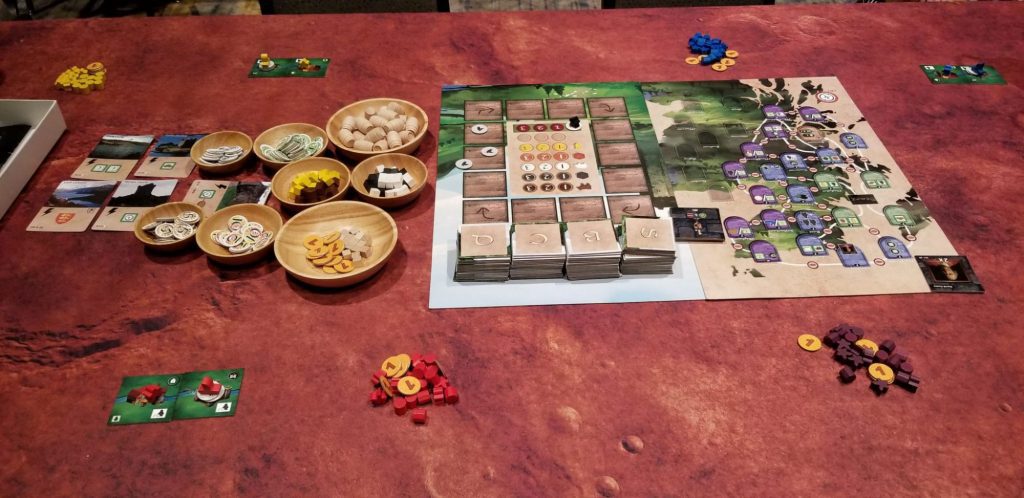
That’s where the similarities end, though. Before I get into the biggest changes to the game – The Clan Board and the titular Chronicles – I’d like to point out a few of the smaller, more subtle differences. First, you no longer have clansmen, a word which carries some pretty negative connotations in certain parts of the world. They’re proper Scotsmen now. Nils Herzmann from Funtails confirmed that this was the reason for the change. In fact, he insisted on it.
And since we’re talking about Scotsmen, that brings up another small change. In Glen More, you could use your movement points to remove your Scotsmen from the board to turn them into chieftains in order for them to count for scoring purposes. With the addition of the Clan Castle on the starting tile (even more changes to the original game!), your Scotsmen only have to be parked on the Clan Castle at the beginning of a scoring in order for them to count. In terms of game play, this gives the players more flexibility and more opportunities to expand while also encouraging them to pay attention to the tile stacks so that they can move their Scotsmen back to their castle before scorings occur.
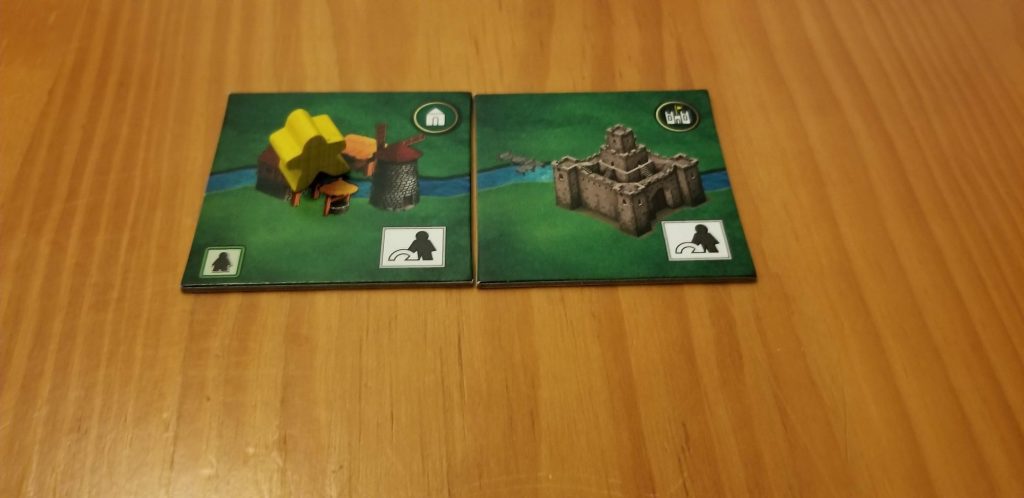
In Glen More, part of the difficulty of the game was in balancing your building efforts along the game’s two axes – the x-axis represented by the river and the y-axis represented by the road. In Glen More II: Chronicles, the road has been removed from the tiles entirely and is now a prominent aspect of the Clan Board (which we’ll talk about in more detail later). This helps to remove some of the convolution of the building process from the original game and allows the players to focus their attention on other things. This makes me think of another tiny change. In the spirit of streamlining, there is no pre-loading the market with coins in a two player game anymore.
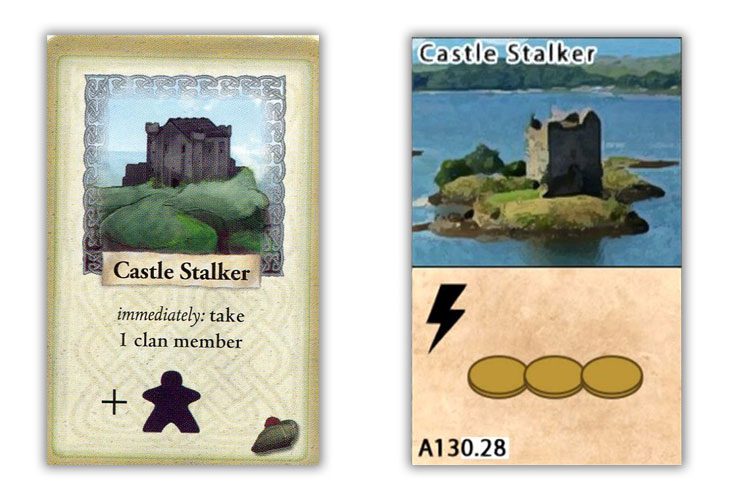
Aside from those, other notable improvements include major ones like the almost completely revamped Landmark cards and artwork. Most of the landmarks from the original game still exist in Glen More II: Chronicles, but very few of them remain the same. Some have even inherited the abilities of other Landmark cards. For example, in the original game, Armadale Castle would immediately provide you with an extra three coin. In Glen More II: Chronicles, this ability has been transferred to Castle Stalker; while Armadale Castle’s ability now makes your coins more valuable during end-of-game scoring. Of course, this means that Castle Stalker is entirely different from its original game counterpart as well.
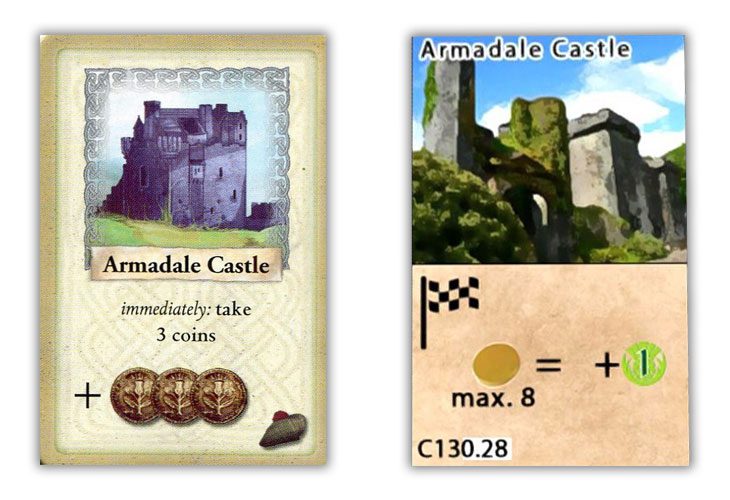
Lastly, I mentioned the artwork. When the base game was released in 2010 with artwork by Loïc Billiau and Harald Lieske it was, um, fine? I guess? I mentioned it in my review of the base game and it bears repeating, the artwork and graphic design in the original Glen More, while functional, was nothing to get overly excited about. That has all changed now. Just compare this:
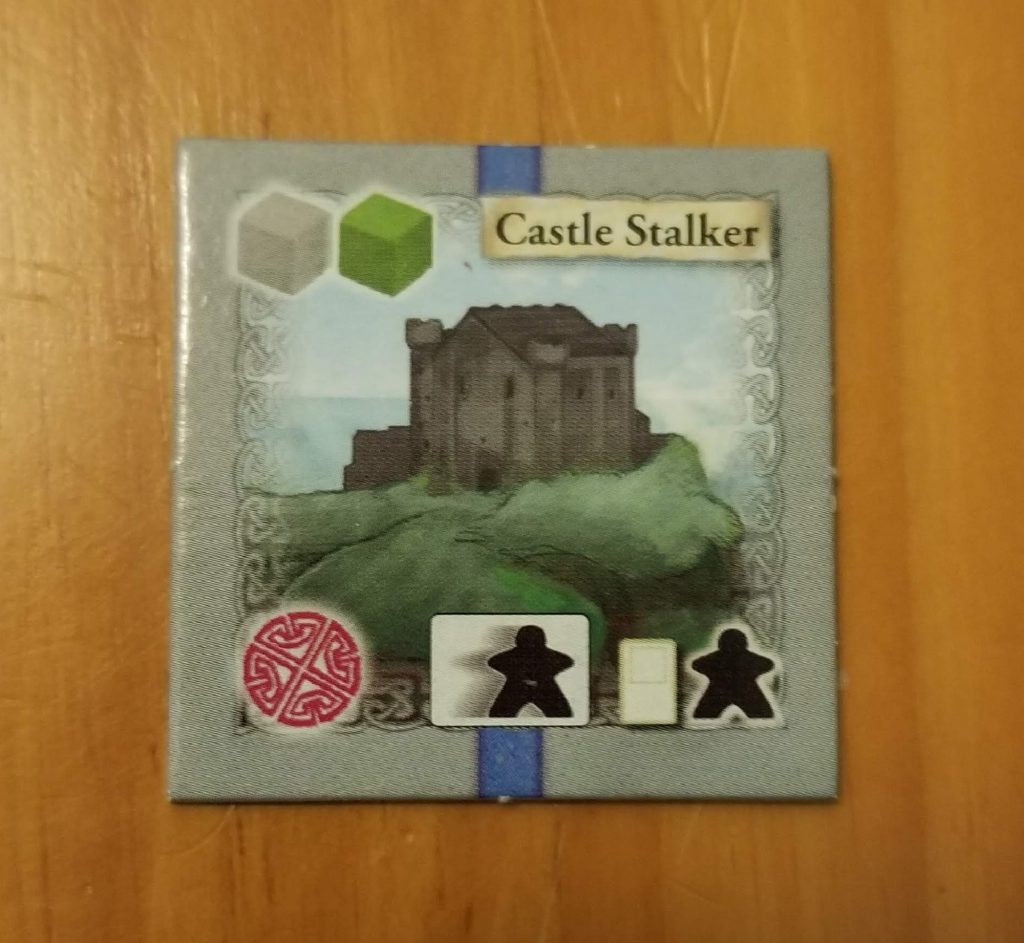
…. to this:

… and the differences become obvious. This is just one small example, but all of the tiles in the game are being given the same treatment. If Castle Stalker is any indication as to the direction the artwork and graphic design are headed in, I think we’re in for a real treat because that looks pretty fantastic. Here’s another sample of illustrator Hendrik Noack’s astounding work (borrowed from Funtails’ Facebook page):
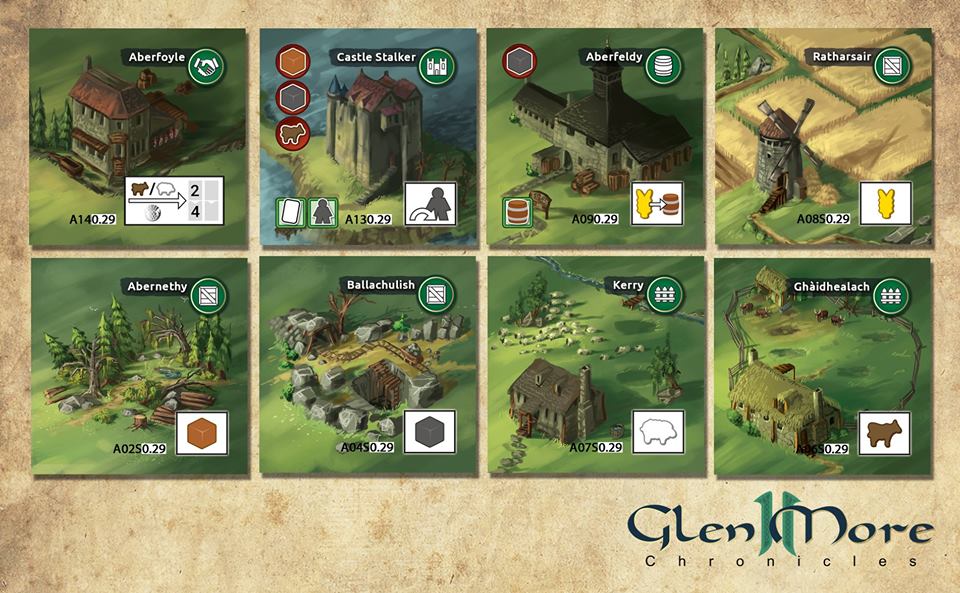
Are these changes for the better? Well, that’s up for debate. I’m a long time fan of the original Glen More and while most of me thinks that these new changes are for the better and make the game more accessible and easier to play, there’s a small part of me that’s holed up in its hideout refusing to give up the ghost. Aside from the troublesome usage of the word “clansmen”, I didn’t think that Glen More needed fixing. Now, having experienced the Clan Board and the Chronicles, I can understand the thinking behind the changes that have been made.
The Other One-Third
The Clan Board
So, what exactly are the Clan Board and the Chronicles? Let’s discuss these in some detail.
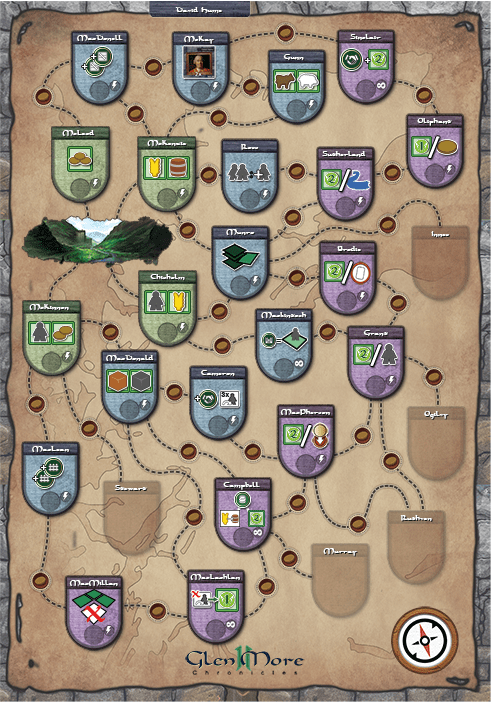
In addition to the normal tiles that you’d see in the original game of Glen More – Castle, villages, sheep farms, etc. – a new tile type has been added to the game: Persons. These tiles feature the images of some legendary characters from Scottish history. Unlike the other tiles which are added to a player’s village when they are collected, Person tiles are kept in a player’s general supply. They serve two important functions. Firstly, when collected, Person tiles allow a player to interact with the Clan Board. Secondly, Person tiles are included in the four different scorings during the game.
The Clan Board is divided into several different Clan Fields. When collecting a Person tile, a player may claim one of these fields by placing one of their Clan markers onto it. When they do, they then gain the benefit provided by that field. Some of these benefits are one time bonuses (free resources, extra Scotsmen, coin, etc.) while others provide long lasting benefits (scoring points whenever certain conditions are met, making certain actions more efficient, etc.). The trick is that these Clan fields are linked together by roads and moving from one field to the next will cost coin.
The further the player strays from the Start location or previously placed Clan markers, the more coin it will cost the player to claim the target field. Since each of these fields can only be claimed once per game, the Clan Board adds a whole other element of tough decision making to the game. How much coin are you willing to spend to gain an advantage or deny that advantage to someone else that may benefit from it more than you can? Which field should you choose? They’re all pretty useful in the right circumstances and having to choose between all of them isn’t always easy.
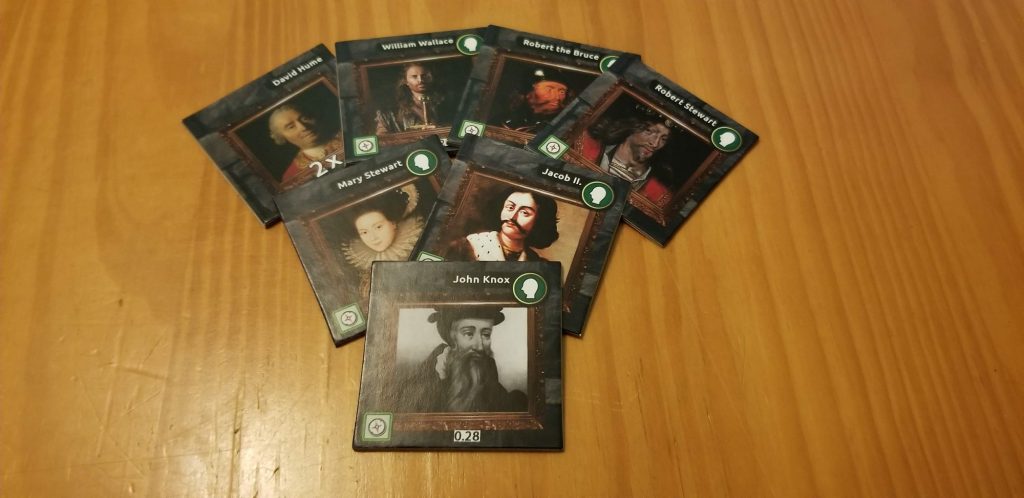
As mentioned previously, Person tiles not only allow interaction with the Clan Board, but they are also factored in during scoring. Just as you compare whisky barrels, chieftains, and Landmark cards in the original game and score points according to the difference, now you also compare Person tiles as well. Person tiles also have the added benefit of gaining you something useful without inflating the size of your territory. This is important because you could potentially lose points at the game’s end if your territory is larger than other people’s.
Lastly, Glen More II: Chronicles will include 8 different Chronicles along with the base game. These Chronicles are tiny little plug-and-play expansions which can be mixed and matched in different combinations to change up the game by adding new ways to score points, new strategies to pursue, and new ways to interact with your opponents. In the prototype that I received, there were only two of these Chronicles included: The Highland Boat Race and The Hammer of the Scots.
The Highland Boat Race
In the Highland Boat Race, each player controls a ship that begins the game at their Clan Castle. During the game setup, a Start tile is shuffled in with the other tiles and this tile will be added to the rondel at some point. As soon as a player crosses over this tile, the race begins! Whenever a player would cause one of the tiles in their territory to produce movement points, these points can be used to move their ship clockwise around the table from river tile to river tile instead. When they reach the end of their own river, their boat begins at the rightmost river tile in the territory of the opponent to their left. When their boat reaches or crosses over their opponent’s Clan Castle, they will earn a random reward. The object of the boat race, of course, is to be the first to arrive back at their own Clan Castle before anyone else does. Prizes are awarded for first, second, and third place and anybody that either comes in dead last or does not complete the race at all, will suffer the punishment of having their coins count for nothing during end of game scoring.
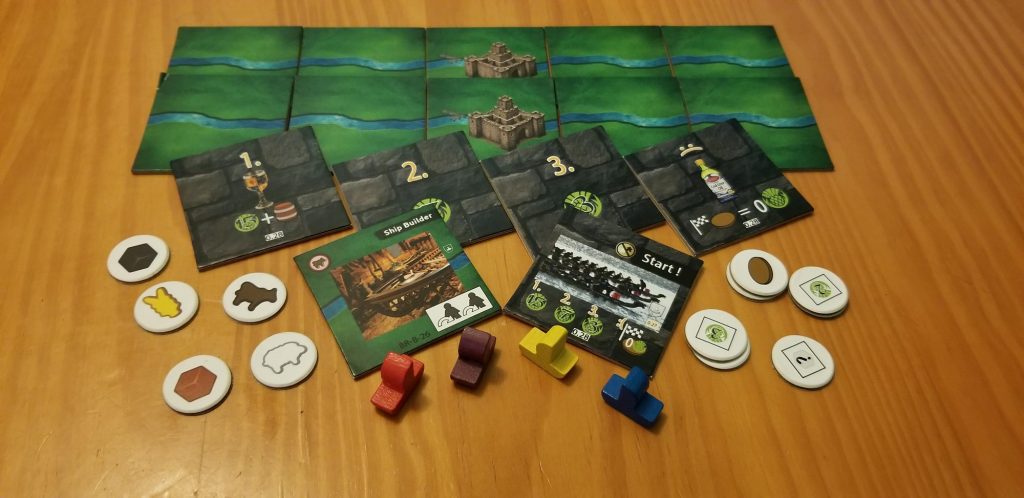
The Highland Boat Race is considered to be an “easy” Chronicle because it doesn’t add much complexity of the game. It just gives the players something else to worry about and adds a little bit of variety. If a player wishes, they can just ignore the entire thing, but they will do so at their detriment. First place awards 15 victory points as well as a free cask of whisky. Compare that to the nothing gained and points lost from income at the end of the game and you can see why you probably shouldn’t ignore the boat race. However, you could potentially use the time that other people are focusing on their racing to pursue other avenues of scoring points elsewhere and still do well in the end. Who knows? While the boat race doesn’t add a lot of extra complexity, it makes up for it in fun.
The Hammer of the Scots
Whereas the Highland Boat Race is an “easy” Chronicle, the Hammer of the Scots is at the other end of the scale. Mechanically, it’s about as easy to grasp as the boat race is, but used in the right way, it can be used as a boon or wielded as a weapon. This opens an entirely new avenue of subtlety and strategy.
During setup, a new pawn is added to the rondel along with a coat of arms tile – The Englishman. The first time that a player passes this pawn with their own player piece, then they will take the coat of arms tile to signify that they control it. When every player has passed up the Englishman, then it will be the Englishman’s turn to go. The controlling player can do one of two things at this point – a.) move the Englishman to any tile on the rondel and pay money in order to take that tile into their possession or b.) move the Englishman to any tile on the rondel and choose not to pay. If this is the case, the player takes any money from the rightmost space of the Hammer of the Scots area of the market board that has money on it and the tile that was landed upon is removed from the game. Once a player has claimed the Englishman, there is only one way to wrest control from them and that is through the usage of the four new Landmark cards that get shuffled into the different decks during game setup. When claimed, these landmarks provide the player with the opportunity to take control of the coat of arms tile.

With this Chronicle comes not only the ability to remove tiles from the rondel with focused precision, but it also gives the controlling player the ability to essentially take two turns per round and that’s pretty huge. There are a lot of times in Glen More when you’re going to be looking at two tiles that you really want and trying to determine how risky you want to be. Do you just forget about the first one and go directly to the second or do you take the first and hope that the second is still around when it comes back to your turn? The Hammer of the Scots chronicle resolves this conundrum by allowing you to do both.
More To Come
And this is just a taste of what you can expect from Glen More II: Chronicles. Several guest designers have contributed to the design of the various chronicles including none other than the creator of Carcassonne himself, Klaus-Jürgen Wrede! In his chronicle Highlander – There Can Be Only One an actual 3D mountain will be placed on the rondel track. In order to pass over this mountainous hurdle, the players will have to leave resources behind. According to the teaser on their page “…only the Scot with the best timing can climb the mountain and claim the resources left behind.” I’m not sure what that means, but it seems like it’s going to be a lot of fun.

Thoughts
I have thoroughly enjoyed my time with Glen More II: Chronicles so far. I mean, it helps that I am a fan of the original, but Glen More II: Chronicles is a really good game in its own right. Going into this review, I wasn’t really sure that I needed a second Glen More in my life. I think I was right, but not in the way that I was expecting. I suspect that Glen More II: Chronicles is going to replace the original Glen More for me. It’s just a much better game with so many more possibilities. Playing Glen More II: Chronicles is like seeing an amazing movie and playing the original is like watching the behind the scenes footage of how it was made. Both are equally entertaining in their own right, but there’s one that you’re likely to watch way more than the other given a choice.
So, if you’re a long time Glen More fan like me and are wondering if you really need this game in your life given that you own the original, the answer is a firm YES. And if this is your first time ever being exposed to the awesomeness that is Glen More, then welcome to the club! Glen More II: Chronicles is a spectacular game and I am eager to see where the future takes it.



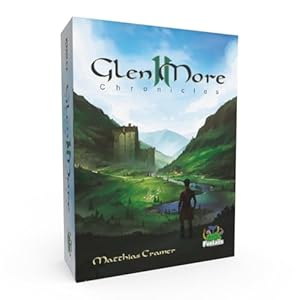


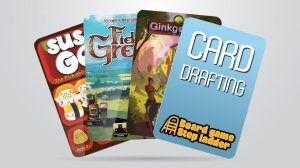
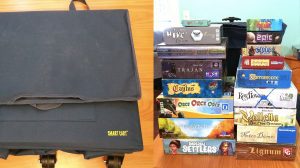




I’m interested in a more quick game of glen more, and I liked the play time of glen more 1 (consist of 3 rounds). I see that glen more 2 has 4 rounds and the play time is longer. My question is, can I play a 3 round version of the original glen more 1, on the glen more 2 game? (minus the street feature)
Unfortunately, that isn’t possible. The new Clan board is so well integrated that there’s no way to play without it. A large part of the challenge in Glen More was having to balance your river expansion with your road expansion. The road now resides on the Clan Board. Also, Glen More II: Chronicles actually has 2 fewer tiles to content with than Glen More did, so the base game is slightly shorter.
According to the Glen More rule book, the game contains 72 tiles. The Glen More II: Chronicles contains 5 starting tiles, 14 A tiles, 17 B tiles, 17 C tiles, and 17 D tiles. That’s a total of 70 tiles. If you count the David Hume tile (which is rewarded to the player that claims a specific Clan Board location) and the World’s End tile (which is how the endgame is triggered) then you wind up with the exact same number of tiles.
In summary, if you’re looking at Glen More versus Glen More II: Chronicles and wondering which one to get, I’d recommend Glen More: II. You’re getting more bang for your buck.